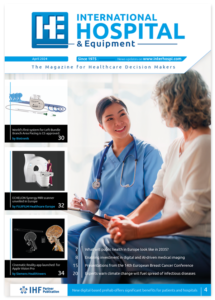Targeting MC1R in metastatic melanoma
In 1960, scientists described the “Philadelphia chromosome” that causes chronic myeloid leukemia, and in 2001 the Food and Drug Administration approved the drug imatinib to disable the action of this cancer-causing genetic change. It was the dawn of genetically-targeted treatments against cancer and it seemed as if many cancers would fall to a similar strategy: Find a genetic difference between cancer cells and healthy cells, and then develop a drug to target this difference. Of course, rarely has it proved that easy. It’s difficult to find a genetic difference common to all cells within a single cancer, and many of these differences are impossible to target with existing drug strategies. Often this seemingly simple gene/drug pairing doesn’t work.
Then again, sometimes it does.
A University of Colorado Cancer Center study describes a genetic change common to 80 percent of human melanomas, the most deadly form of skin cancer, and also describes a molecule that seeks out cells marked by this genetic change. The current study attaches a radioactive label to the targeting molecule and uses positron emission tomography (PET) imaging to show that the radiolabeled molecule does, in fact, seek out and bind to melanoma cells. Using a similar approach, it may be possible to not only image these cells, but to attach therapy to this targeting molecule to kill these melanoma cells.
The work starts with a protein called melanocortin-1 receptor (MC1R), which is involved in determining skin and hair colour, but which is also found at a higher level on the surface of more than 80 percent of human melanomas. The current study describes a “peptide” that specifically binds to MC1R. If MC1R is a lock, then the peptide 68Ga-DOTA-GGNle-CycMSHhex is the key that fits it. In this case, researchers attached an imaging radionuclide to this peptide – the combination of peptide and radionuclide found, bound, and “lit up” melanoma metastases, allowing researchers to image these melanoma cells.
The success of this molecular targeting approach suggests the possibility of using the peptide as a delivery vehicle to transport a therapeutic radionuclide directly to melanoma cells marked with MC1Rs for therapy.
“Basically, we attach the imaging radionuclide to the peptide, then the radiolabeled peptide finds MC1Rs on the melanoma through blood circulation, allowing us to use a PET machine to gather the signals from the radiolabeled peptide for melanoma imaging. It’s a very sensitive way to see melanoma,” says Yubin Miao, PhD, investigator at CU Cancer Center and Director of Radiopharmaceutical Science at the Radiology of CU School of Medicine.
In addition, researchers were able to replace the radiolabel with a fluorescent one to generate a new MC1R-targeting fluorescence imaging probe (called Cy5.5-GGNle-CycMSHhex). The current study shows that the fluorescent probe binds and stains MC1Rs on melanoma cells and lesions. Miao sees that the combination of these two approaches – one radiolabeled and one fluorescent – may potentially improve surgical outcomes for melanoma via imaging-guided surgery.
He also sees the potential to use a similar strategy as a personalized therapeutic approach for patients with melanoma metastases high in MC1Rs, especially for brain metastases.
University of Colorado Cancer Center
https://tinyurl.com/ycjf52dv

